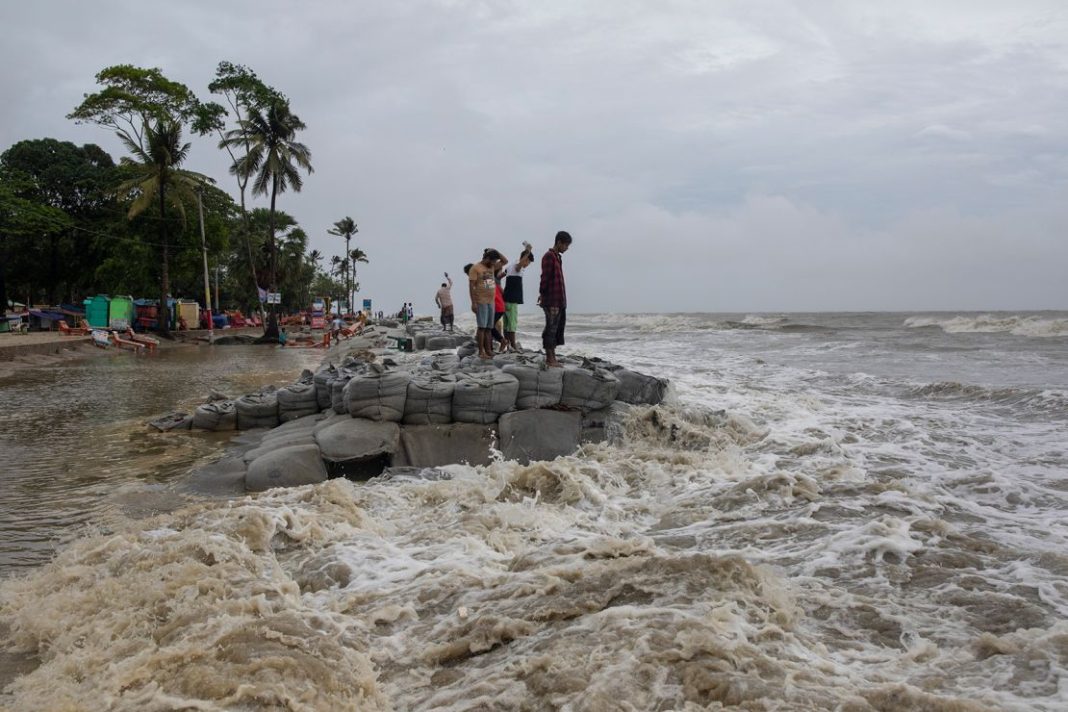Millions in low-lying areas of Bangladesh and India faced widespread devastation on Monday, left by a powerful cyclone that claimed at least 16 lives, destroyed thousands of homes, damaged seawalls, and flooded cities.
Residents, still battered by gusty winds and heavy rain, struggled to salvage their belongings a day after Cyclone Remal made landfall with ferocious winds and towering waves.
“At least 10 people died in the cyclone in Bangladesh,” reported Mohibbur Rahman, the state minister for disaster management. Some drowned, while others were crushed by collapsing homes.
In India, Sumit Gupta, a senior government official from West Bengal, confirmed the deaths of at least six people, including three who were electrocuted and others struck by debris.
A local reporter described villages swamped by storm surges, roofs torn off, trees uprooted, and power lines downed.
Rahman detailed the extensive damage in Bangladesh, where 3.75 million people were affected, 35,483 homes were destroyed, and another 115,992 were damaged.
In recent decades, cyclones have killed hundreds of thousands in Bangladesh. However, the frequency of superstorms has increased, from about one annually to as many as three, due to climate change.
Though accustomed to annual storms, some locals felt this cyclone was more intense and lasted longer than previous ones. “This time the wind is extreme,” said Uttom Kumar Das, a 62-year-old businessman. “It is also lasting longer than before.” With most coastal areas only a meter or two above sea level, Bangladesh remains highly vulnerable to storm surges.
In Chittagong, Bangladesh’s second-largest city, streets were waist-deep in water after receiving 240 millimeters (9.5 inches) of rain, according to the Bangladesh Meteorological Department.
“We are trying to rescue some 100,000 people,” said Muhammad Abul Kalam Mallik, a senior weather forecaster. At its peak, Remal’s wind speeds reached 111 kilometers per hour.
In Kolkata, India, residents waded through ankle-deep water. Cyclone-driven waves breached a major embankment on Bangladesh’s Manpura island. “The town protection embankment at Manpura was broken by the strong waves and heavy rains unleashed by the cyclone,” said Showkat Ali, an administrator in the hard-hit Barisal district.
About a million people in Bangladesh and India evacuated inland before the cyclone struck, with around 250,000 people remaining in concrete storm shelters in Bangladesh.
While climate change is believed to fuel more storms, better forecasting and effective evacuation planning have significantly reduced death tolls.
In West Bengal, India, the cyclone blew off roofs, uprooted thousands of mangrove trees, and downed electricity poles. “Storm surges and rising sea levels breached several embankments,” said Bankim Chandra Hazra, a senior state government minister. “Some island villages are flooded.”
Sumita Mondal, a 36-year-old, sought shelter away from India’s coast, carrying only what she could. “My three-year-old son is crying for food,” she told reporters by phone.
Bangladeshi weather expert Mallik noted that the Sundarbans mangrove forest helped mitigate the storm’s impact. “Like in the past, the Sundarbans acted as a natural shield to the cyclone,” he said.
However, Abu Naser Mohsin Hossain, a senior forest official for the Sundarbans, expressed concern that the storm surge had contaminated crucial freshwater sources with salt water. “We are worried,” Hossain said. “These ponds were the source of fresh water for the entire wildlife in the mangroves, including the endangered Bengal tigers.”




